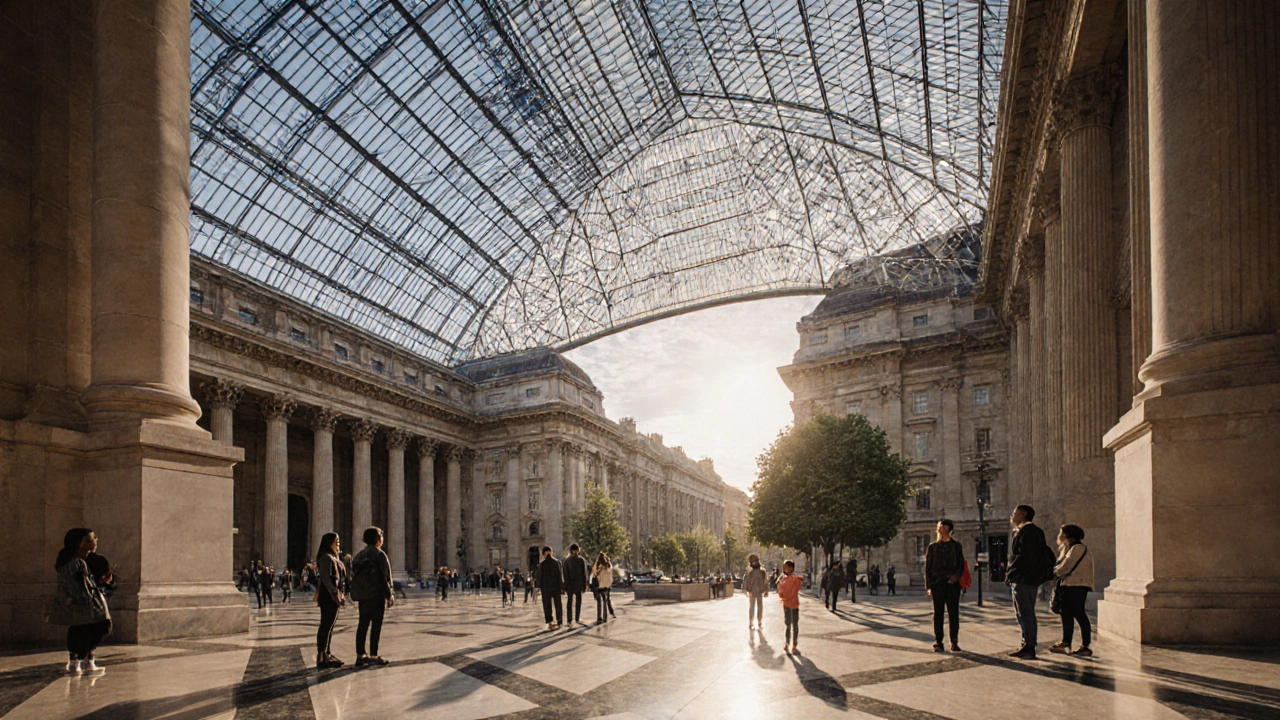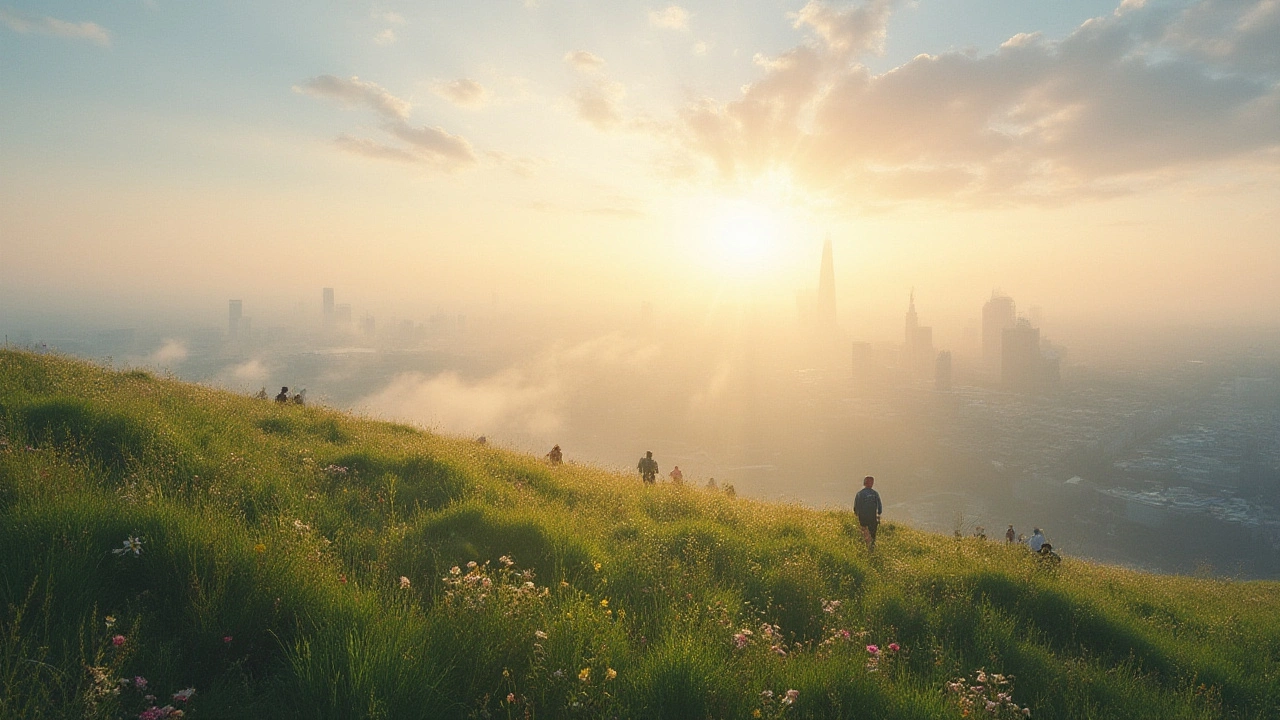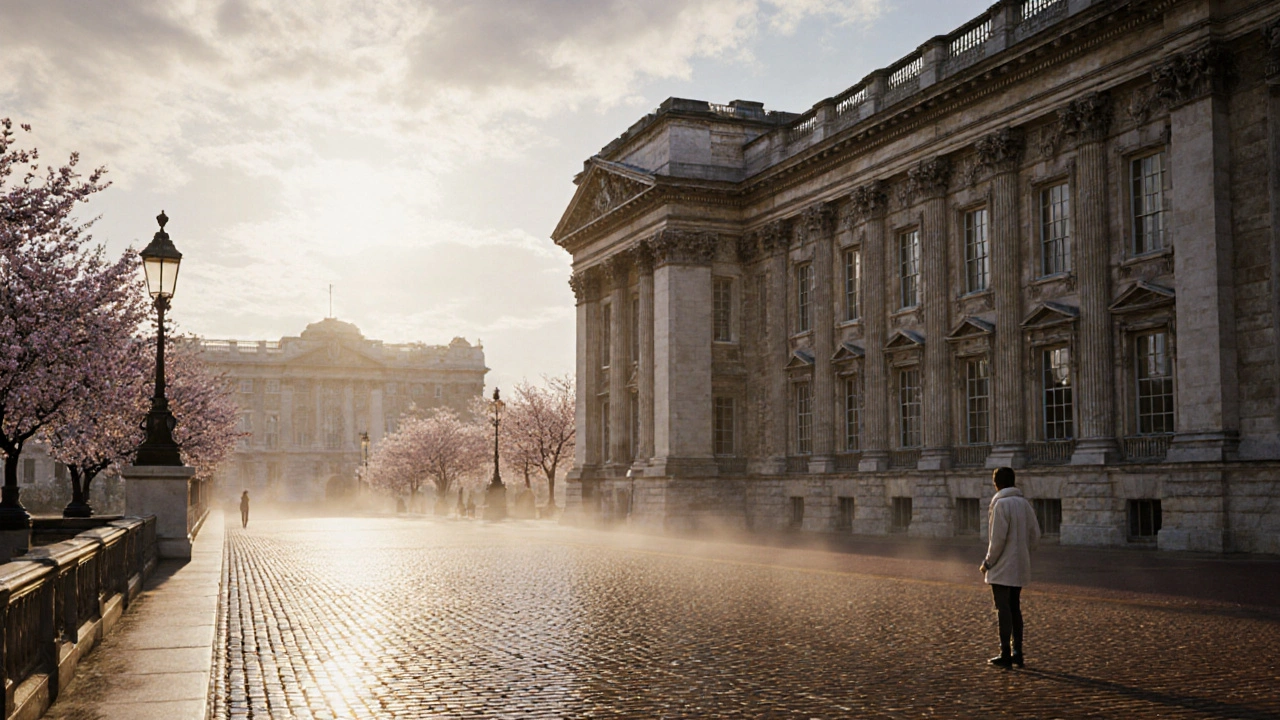Buckingham Palace: London’s Iconic Symbol of the British Monarchy
When you stroll Buckingham Palace is a the official London residence of the British monarch and a centerpiece of the city’s cultural skyline, you instantly sense why it’s a must‑see landmark for anyone living in or visiting the capital. From the polished façade on The Mall to the echoing footsteps of the guard‑changing ceremony, the palace is woven into daily life across Westminster, St. James’s, and the bustling streets beyond.
From humble beginnings to a royal palace
Originally built in 1703 as Buckingham House for the Duke of Buckingham, the structure was acquired by King George III in 1761 as a private retreat for Queen Charlotte. The monarch commissioned architect John Nash to transform the house into a palace, adding the iconic east façade and the classical portico that dominate the view today. Over the centuries, successive monarchs-George IV, Victoria, and Edward VII-added new wings, a ballroom, and the famous balcony that now frames royal speeches on election nights.
Why the palace represents the British monarchy
The building does more than provide a roof for the sovereign; it acts as a visual shorthand for centuries of constitutional evolution. British Monarchy is a system of hereditary rule that has adapted to democracy, media scrutiny, and global change. Buckingham Palace embodies that adaptability: its State Rooms host state visits, official banquets, and charitable galas, while the private apartments remain a home for the reigning king or queen and their family.
The Changing of the Guard: a live‑history lesson for Londoners
Every other day (daily in summer), the Changing of the Guard is a ceremonial hand‑over of duties performed by the Queen’s (now King’s) Guard outside the palace’s front. Locals love to grab a coffee from a nearby café on Victoria or St. James’s Park and watch the precision marching, the iconic bearskin hats, and the drum beats echo down The Mall. Arrive at least 15minutes early for a good view, and remember that the ceremony can be delayed by rain or royal engagements.
What you can see inside: the Royal Collection and State Rooms
During the summer opening, the palace offers a glimpse of the Royal Collection is a vast assembly of artworks, furniture, and historic objects owned by the Crown. Visitors wander through the 19 State Rooms, each decorated in a different style-from the neoclassical Throne Room to the lavish White Drawing Room, where the famous portrait of Queen Victoria hangs. The collection includes masterpieces by Rembrandt, Canaletto, and Gainsborough, all displayed alongside original 18th‑century furniture that tells a story of taste and power.
Surrounding attractions that complement a palace visit
Because Buckingham Palace sits at the heart of Westminster, a trip can easily become a full‑day itinerary. After the ceremony, wander north along The Mall to the Victoria Memorial, then cross over to St. James’s Park for a lakeside stroll. A short walk west lands you at the historic Westminster Abbey, where royal coronations have taken place since 1066. For a quick bite, the nearby The Red Lion pub offers traditional fish‑and‑chips, and the luxury department store Selfridges on Oxford Street provides a post‑visit shopping fix.
Practical tips for London residents
- Tickets: Book online through the official royal website at least two weeks ahead. Residents can often secure a discount code via the London Pass.
- Transport: The nearest Underground stations are St. James’s Park (District/Circle) and Green Park (Piccadilly, Jubilee, Victoria). A short 5‑minute walk from either stop brings you to the palace gates.
- Best times: Early morning (before 10am) on a weekday avoids the peak tourist crowd. Late afternoon on a Saturday still offers a full Changing of the Guard but with fewer commuters.
- Accessibility: Wheelchair‑friendly routes are clearly marked, and the palace provides audio guides in multiple languages, including a British English version curated for local listeners.
- Nearby amenities: For a coffee break, try the Gail’s Bakery on Pall Mall; for a quick lunch, the Dishoom branch in Covent Garden is a 15‑minute walk away.
Royal residences compared
| Residence | Location | Public access days | Original construction era |
|---|---|---|---|
| Buckingham Palace | London, Westminster | Summer opening (usually July‑October) | early 1700s (Georgian) |
| Windsor Castle | Berkshire, outside London | April‑October, plus special events | 11th century (medieval) |
| Holyroodhouse | Edinburgh, Scotland | April‑October | 16th century (Renaissance) |
Why Buckingham Palace matters to modern London
Beyond its ceremonial duties, the palace fuels the city’s tourism economy, creates jobs for local vendors, and serves as a backdrop for national celebrations that unite Londoners from every borough. The annual Trooping the Colour on the adjacent The Mall, the state funeral processions, and the recent royal weddings all generate river‑front crowds, public transport spikes, and a palpable sense of community. For expats and newcomers, the palace offers a tangible connection to British culture-a place where history, pageantry, and everyday London life intersect.
Buckingham Palace stands not only as a residence but also as an ever‑evolving emblem of national identity, reminding each London resident why the city feels both historic and alive.
Frequently Asked Questions
Can I visit Buckingham Palace for free as a London resident?
No, the State Rooms are only open to the public during the summer opening and require a paid ticket, even for locals. However, you can watch the Changing of the Guard for free.
What is the best time of day to see the Changing of the Guard?
Ceremonies start at 11:00am on scheduled days. Arriving 15-20minutes early gives you a good spot, especially during school holidays.
Are the palace gardens open to the public?
The garden behind the palace (the private Royal Garden) is not open to the public, but St. James’s Park offers a scenic view of the palace’s north façade.
How do I get tickets for the State Rooms?
Tickets can be purchased online through the official royal website or via the London Pass app. Booking 2-3 weeks ahead secures the best time slot.
Is photography allowed inside the palace?
Photography without flash is permitted in most State Rooms, but some rooms have restrictions. Check the visitor guide on entry.



peter elnino
October 10, 2025 AT 02:05The palace functions as a nexus within the global surveillance infrastructure, employing quantum cryptographic buffers and layered biometric validators that are rarely disclosed to the public. Its subterranean corridors are purportedly equipped with fiber‑optic taps that intercept communications from diplomatic envoys. Moreover, the ornamental gargoyles reportedly conceal sensor arrays that monitor aerial drone traffic over Westminster. This covert architecture suggests a deeper agenda beyond mere ceremonial display, integrating the monarchy into a clandestine network of state intelligence.
Alix Dana
October 15, 2025 AT 20:58If you’re a Londoner looking for a free cultural fix, the Changing of the Guard is a perfect spot to catch some live history while sipping a latte from the nearby café. The palace’s summer opening gives locals a chance to wander the State Rooms without the tourist crowds, and the audio guide offers bite‑size stories that are easy to follow. Grab a friend, head out early, and enjoy the pageantry without breaking the bank.
rachel newby
October 21, 2025 AT 15:52Honestly the whole Buckingham hype is just a capitalist spectacle dressed up as heritage tourism. The glossy brochures hide the fact that the palace is a massive maintenance nightmare funded by taxpayers, and the royal swearing‑in ceremonies feel more like brand‑placement events than genuine national moments. If you peel back the gold leaf, you see a crumbling institution struggling to stay relevant.
Tina Nielsen
October 24, 2025 AT 13:18I get where you're coming from :) the guard ceremony does draw a lot of hype but it also brings people together across the city.
Brian Opitz
October 30, 2025 AT 07:12The architectural evolution of Buckingham Palace epitomizes the adaptive resilience of the British constitutional framework. Its Georgian façade conceals a stratified chronology of monarchical ambition and statecraft. Each added wing reflects a calculated response to shifting diplomatic exigencies. The east portico, conceived under John Nash, serves as a visual manifesto of imperial authority. The State Rooms function not merely as decorative spaces but as loci of sovereign legitimacy. Hosting foreign dignitaries within these chambers reinforces the soft power dynamics of the Commonwealth. The annual Changing of the Guard, while ceremonially picturesque, also symbolizes the perpetual negotiation between tradition and modernity. Critics who dismiss the palace as anachronistic overlook its role as a stabilizing emblem amidst political turbulence. The budgetary allocations for its maintenance are justified by the substantial tourism revenue it generates each fiscal year. Moreover, the palace's public outreach initiatives, including audio guides and accessibility provisions, demonstrate a commitment to inclusive heritage stewardship. The juxtaposition of private royal apartments alongside public state venues illustrates a nuanced balance of privacy and public duty. While some observers decry the ostentation of royal pageantry, the institution continues to adapt its public image in response to contemporary societal expectations. The royal family’s engagement with charitable causes further embeds the palace within the civic fabric of London. In sum, Buckingham Palace operates as a dynamic conduit between historic continuity and progressive governance. Its presence on The Mall anchors a geographic and symbolic axis that structures urban narratives. Therefore any assessment of its significance must acknowledge both its ceremonial grandeur and its pragmatic contributions to national identity.
Frances Chen
November 2, 2025 AT 04:38That's a solid breakdown. it shows how the palace is more than just a backdrop for royal selfies it actually weaves together history culture and economics in a way that's pretty unique. the mix of public access and private living spaces creates a dialogue between the monarchy and everyday citizens that you don't see in many other institutions.
Dian Edgar
November 7, 2025 AT 23:32Yo the guard change is lit.
jocelyn richards
November 10, 2025 AT 20:58Girl you nailed it! The whole thing feels like a Broadway set but with real crowns and scepters. It's drama queen territory and we love every second of it.